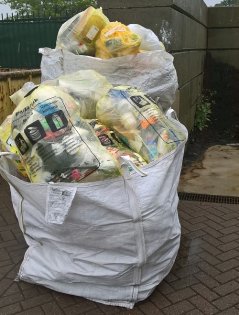
News
Calculation model charts amount of raw materials recycled by municipalities
Municipalities are now able to calculate their production of secondary raw materials from their packaging waste. For this purpose, researcher Ulphard Thoden van Velzen of Wageningen University & Research has developed the practical calculation model Feedstock from Waste. This generates valuable information about the contribution of municipalities to the circular economy.
The calculation model is available for municipalities in the form of an Excel sheet. Here, they can enter the available data about waste flows and the amount of waste collected per flow themselves. For information which is not available at municipal level, the model applies national average values as defaults. On the basis of this input, the model will calculate the amount of secondary raw materials which have been ‘produced’ from collected packaging waste within the municipality. “This way, municipalities can see how much they contribute to the circular economy.”
Model also shows applications of waste material
According to Ulphard Thoden van Velzen, the strength of the model is that it does not only chart the composition of the collected material, but that it also shows how the collected material can be applied: “The calculation model contains a lot of bundled expertise of Wageningen University & Research about average compositions and various correction factors, for example the presence of moisture and dirt. Of course, the more exact the municipality completes the model, the narrower the results will be.”

Citizen is crucial link in waste separation
The researcher thinks that the results will show municipalities what goes well and what could be improved: “A possible result could be that the separation and collection of glass goes well, but that there is room for improvement in paper and cardboard. By using the results of the model in their communication with inhabitants, municipalities may boost their motivation for the accurate separation of waste.” That is vital, since previous research has indicated that the citizen is a crucial link in the collection of separated waste flows.
Aiming at quality of waste flows
On 11 January 2019, the Netherlands Environmental Assessment Agency announced that there is a general upward tendency in the recycling of raw materials but that it is still way short of the government’s objective: a fully circular economy in 2050. Municipalities are an important link in this. According to Chris Bruijnes, managing director of the Netherlands Institute for Sustainable Packaging, municipalities should not only aim at minimal residual waste, but also at the quality of the separated waste flows. “We still see to much pollution in separated waste flows, especially in the flow of plastic, metal packaging and beverage cartons. This disturbs their sorting and recycling. This model is a tool for municipalities to address this in a targeted manner.”
The research was performed for the Netherlands Institute for Sustainable Packaging, and financed by KIDV, TiFN and Wageningen Food & Biobased Research.